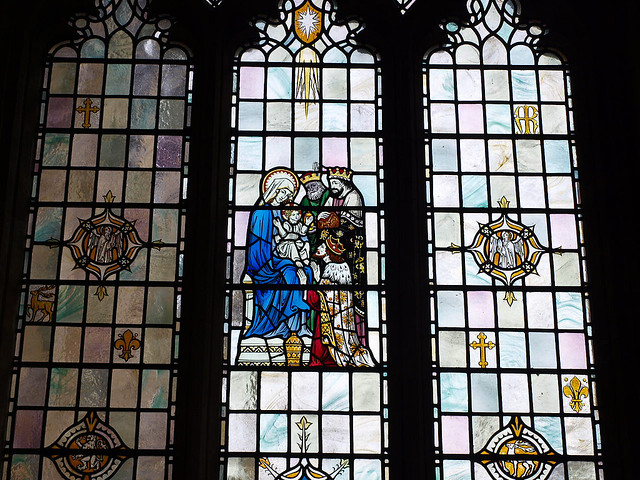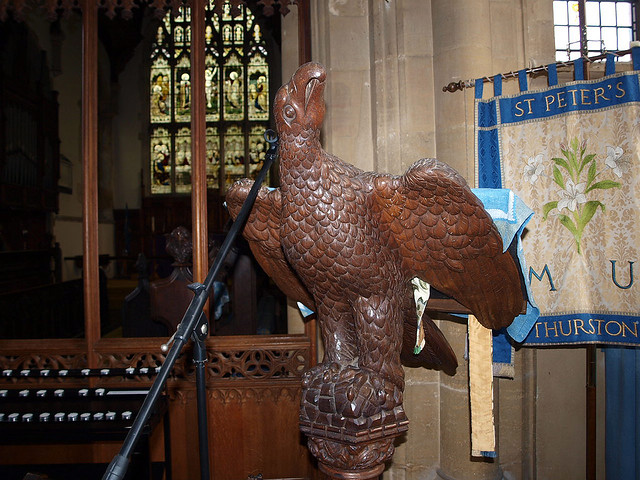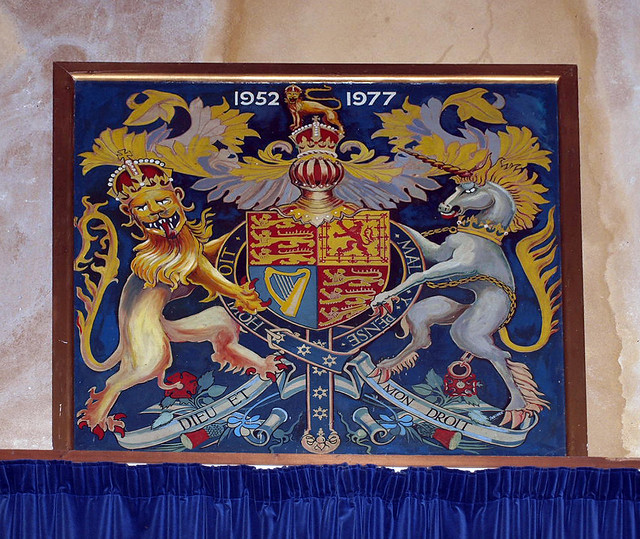ST PETER. Mostly 1861-2 by E. C. Hakewill, after the tower had fallen. The Perp arcade seems correct and the Perp chancel original. Nice SEDILIA and PISCINA reaching evenly to the sill-frieze below the windows. The piscina has two arches and a shelf across. The wall arcading of the aisles which embraces the windows can also hardly have been Hakewill’s invention. - FONT. Big leaf panels of different species, probably C14. - STALLS. Traceried fronts, the ends with simple poppy-heads. - BENCHES. With poppy-heads, traceried ends, and the seat backs carved on their backs. - STAINED GLASS. Fragments in aisle and chancel windows. - PLATE. Cup 1675.
THURSTON. Here, at Nether Hall, a refashioned Tudor house still with its huge old beams and a fine staircase, lived a man of our own century to whom Thurston must often have said Thank You.. He was Sir Walter Greene, who gave this church many of its possessions, including a fine east window of the Crucifixion and the Last Supper, in memory of his father. He restored the 15th century chancel, giving it a roof with wooden angels and a reredos carved with saints and the Annunciation. He gave also the dainty screen, the pulpit with its four Disciples under canopies and its two angels praying by the steps, the eagle lectern (originally made for Bombay Cathedral), and the organ with its lovely oak case. This organ was the last made by that fine 19th century builder Henry Willis, who may be said to have filled our country with music, for he built or renewed the organs in about half the cathedrals in England, as well as in the Albert Hall and in Windsor Castle. It was while tuning this very organ that Henry Willis caught the chill which led to his death.
One of the windows is copied from a Norwegian church and shows the women at the Holy Sepulchre; it is in memory of a son of Sir Walter Greene. Another shows Christ blessing the little ones, in memory of a babe of 14 months who died in 1842. In a lancet window is lovely modern glass which looks old, with little medieval figures in bright colours; and elsewhere are fragments of ancient glass showing in vivid blues and yellows the heads of saints and of Our Lord.
The church has had its benefactor, for whom it is thankful, but it has had its misfortune too, for the 14th century tower collapsed last century and destroyed most of the nave, which was just as old. Both were built up again in the old style, the nave roof resting on stone heads for corbels. The font was carved with its foliage 600 years ago, and there are 12 panelled benches of the 15th century, with eagles, angels, heads, and a Tudor rose as poppyheads. By the altar are sedilia and a piscina all under canopies.
The village has its peace cross set in the churchyard wall. It has also a memorial hall, given in 1914 by a wife who lost her husband when the Titanic went down.



No comments:
Post a Comment